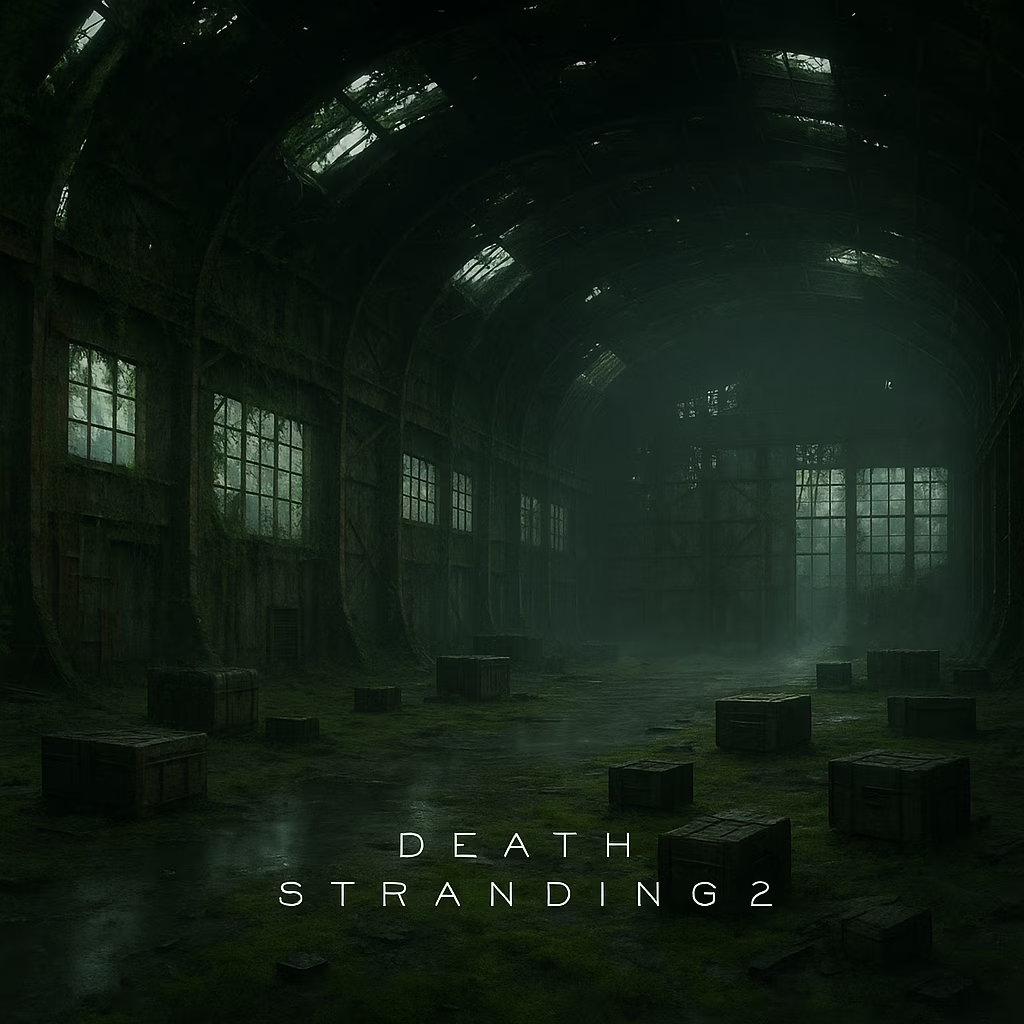Death Stranding 2: On the Beach presents a hauntingly beautiful world where true mastery extends far beyond the main narrative. These elusive trophies aren't mere participation awards—they demand intimate familiarity with the game's intricate mechanics and punishing environments. Players often discover, to their dismay, that completing the story is merely the opening act of a much longer performance. The real challenges hide in plain sight, requiring obsessive attention to systems most would overlook. They test not reflexes but patience, not combat prowess but meticulous planning. Success hinges on understanding the subtle rhythms of Kojima's creation, where a single misstep can unravel hours of progress. These aren't trophies earned through brute force; they're conquered through symbiotic relationship with the game's soul.
8. Seasoned Porter

The Seasoned Porter trophy demands surgical precision across thirty distinct Standard Orders spanning deliveries, recoveries, and eliminations. What transforms this from routine to ruthless is the S-rank requirement—a near-perfect execution where even minor cargo scuffs or tactical miscalculations spell failure. Players must navigate treacherous terrain while maintaining immaculate package conditions, turning routine journeys into high-wire acts. Vehicles become liability multipliers when crossing ravines, and combat encounters mutate into delicate dances where collateral damage ruins everything. It's less about reaching destinations and more about arriving flawlessly, a testament to how the game weaponizes mundane logistics against the player's patience.
7. Connecting Hearts and Minds
Achieving five-star connections with every facility transforms open-world exploration into an endurance marathon. This gold trophy requires rebuilding societal bonds across forty-plus locations through endless cargo runs, structure donations, and online interactions. The grind reveals itself in repetition—delivering to the same isolated prepper multiple times just to eke out final connection percentages. Infrastructure projects like zip-line networks or monorails consume staggering resources, while a single damaged crate can negate hours of effort. Players often describe the process as psychologically mimicking Sam's journey: profoundly lonely work that makes every star earned feel like reclaiming humanity itself.
6. A Premier Porter
Reaching Grade 40 across all five porter disciplines (Combat, Stealth, Servicemanship, Bridge Link, Standard) forces players to abandon mission efficiency for specialized grinding. Each category follows contradictory philosophies—stealth runs punish combat engagements while timed deliveries conflict with meticulous exploration. The trophy's cruelty lies in forcing players to deliberately sabotage their own effectiveness: ignoring optimal routes to practice sneak mechanics or taking unnecessary combat risks just to boost stats. It turns the game's core loop inside out, making progression feel less like organic growth and more like juggling fractured identities across Sam's capabilities.
5. Showdown at the Tar Lake
The Lord of the Tar Lake represents combat design at its most maliciously inventive. This optional boss inhabits an arena where tar pools actively sabotage movement while the creature unleashes area-denial attacks and grab maneuvers. Victory requires memorizing attack patterns while constantly repositioning—a task complicated by vehicles sinking into tar if parked carelessly. Players must balance heavy weapon usage with environmental awareness, creating tension where dodging one attack often means backstepping into another hazard. What elevates its difficulty beyond standard boss fights is how it weaponizes the landscape itself, turning familiar traversal mechanics against the player.
4. Savior of Terminal Fort Knot
Preventing Fort Knot's voidout introduces real-time strategy elements into the survival formula. This bronze trophy demands multitasking under siege conditions: constructing defenses while rescuing NPCs and repelling mixed enemy waves. Failure triggers cascade easily—ignoring a downed ally to reinforce walls might save the structure but sacrifice connection points. The challenge amplifies through unpredictable enemy compositions and tight time constraints, forcing loadout gambles where wrong weapon choices prove catastrophic. It crystallizes Death Stranding's core tension between aggression and protection, where every defensive choice carries opportunity costs with permanent consequences.
3. The Scars Left by the Giants
Navigating the F3 Crater's BT nexus transforms the game into survival horror. This bronze trophy requires traversing instable terrain under constant threat from dense BT clusters while maintaining cargo integrity. Environmental hazards like mudslides and tar geysers compound the danger, where a single detection sequence can trigger catastrophic chain reactions. Players must balance movement speed against stealth efficiency, knowing that vehicle usage—while safer—limits escape options during ambushes. The zone masterfully exploits players' psychological fatigue, making later attempts increasingly error-prone through sheer tension accumulation.
2. Master Builder
Building every structure type seems straightforward until players confront the trophy's hidden complexities. Beyond obvious creations like bridges and generators, it mandates obscure deployments like cargo catapults and electric traps—items easily overlooked during normal play. The real cruelty lies in completion verification; partially built structures don't count, and the game provides no tracking system. Players must manually document dozens of blueprints unlocked through scattered NPC interactions while gathering specific resources for each build. Many spend hours rebuilding structures they'd already made, realizing too late that story-scripted constructions don't register. It's a meta-commentary on futility where the trophy's difficulty stems from organizational chaos rather than skill requirements.
1. BT’s Best Friend
Capturing a live Catcher BT represents the game's pinnacle of precise execution. The multi-stage process begins with unlocking EX Capture Grenades through obscure side quests, then deliberately triggering boss fights by letting smaller BTs drag Sam into tar. During combat, players must weaken the Catcher without killing it—a balancing act complicated by aggressive attack patterns. The trophy hinges on a half-second window when the creature's mouth glows, demanding perfect grenade trajectory under duress. Failed attempts reset the entire encounter, turning each try into a compounding exercise in frustration. Its brilliance lies in how it inverts standard combat logic, rewarding restraint where players are conditioned for destruction.
These challenges provoke unsettling questions about modern achievement design: When do demanding tasks enhance immersion, and when do they become arbitrary barriers? Perhaps the true measure isn't the trophy notification, but how these trials reshape our relationship with the game's world—forcing us to see familiar landscapes through new lenses of patience and observation. Does overcoming them represent mastery of the game... or has the game mastered us through our obsessive pursuit?